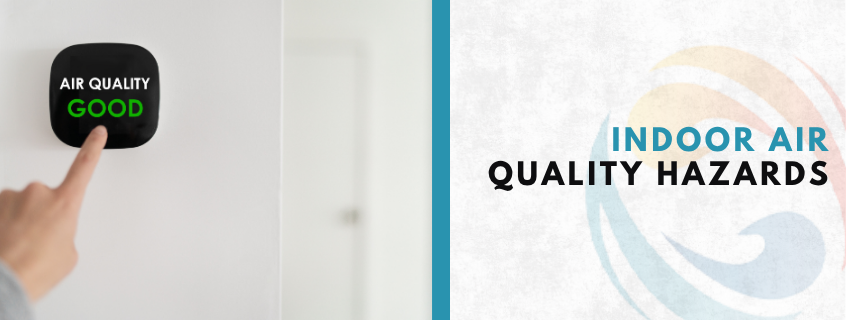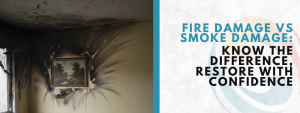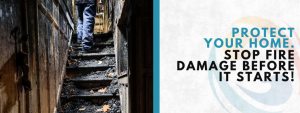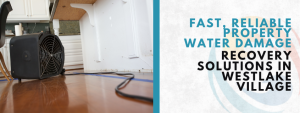
Have you ever walked into a room and suddenly felt a little dizzy, stuffy, or even sleepy for no clear reason? That could be your indoor air telling you something’s wrong. Most people spend up to 90% of their time indoors, yet many don’t realize just how polluted their air at home might be. The truth is, indoor air quality hazards are more common than you’d think—and they don’t just affect your comfort, they could be hurting your health and even damaging your home.
Let’s break down the seven most common indoor air quality hazards that could be quietly sneaking around your living space, and what you can do about them.
1. Mold and Mildew: Hidden Spores, Big Problems
Mold and mildew are among the most dangerous indoor air quality hazards, especially in homes that have experienced leaks, humidity issues, or water damage. These fungi love dark, damp places—think behind walls, under floors, and inside ceiling cavities.
When mold spores become airborne, they can trigger allergic reactions, asthma attacks, and even long-term respiratory problems. For children, the elderly, or anyone with a weakened immune system, these effects can be much more severe.
Common signs that mold might be present include:
- Musty or earthy odors
- Dark patches on walls or ceilings
- Peeling paint or bubbling wallpaper
- Frequent sneezing or coughing indoors
If your home recently experienced flooding, a pipe burst, or roof leak, it’s vital to act quickly. Getting professional help can prevent serious long-term effects. Many homeowners trust certified recovery experts who address hidden damage and contamination before it becomes a health crisis.
Just a few spores can spread fast, and if left untreated, mold can also weaken your walls, ceilings, and even your home’s structure.
2. Volatile Organic Compounds (VOCs): The Silent Fumes
Volatile Organic Compounds, or VOCs, are gases released from everyday household products. That “new paint smell” or the scent from a fresh carpet might seem harmless, but it’s often a sign of indoor air quality hazards at work.
Common household items that release VOCs:
- Paints, varnishes, and finishes
- Cleaning sprays and air fresheners
- Glue and adhesives
- New furniture or cabinetry
Prolonged exposure to VOCs can lead to:
- Headaches
- Nausea
- Dizziness
- Eye and throat irritation
- Liver or kidney damage with long-term contact
Even opening a window might not be enough if you’re constantly using these products. Use low-VOC or VOC-free alternatives and always ventilate rooms well during and after use. If you recently remodeled or installed new items—especially after a disaster—your indoor air could still be affected. For homes in coastal areas, it’s wise to call in experts on damage cleanup in Playa Del Rey to prevent mold and VOC buildup.
3. Dust and Allergens: The Everyday Invaders
Dust is more than just a cleaning annoyance—it’s a cocktail of dead skin, pollen, pet dander, insect droppings, and even microscopic plastic particles. When stirred up, these become airborne and settle in your lungs. For people with allergies or asthma, dust is a constant enemy and one of the most overlooked indoor air quality hazards.
Dust hotspots to watch for:
- Ceiling fans
- HVAC vents and filters
- Under beds and furniture
- Curtain folds and fabric sofas
Using HEPA-filter vacuums and changing HVAC filters regularly can drastically reduce allergens. Consider professional duct cleaning at least once a year. Curtains, bedding, and even wood panel walls can trap allergens if not properly cleaned or sealed.
For older homes with wood surfaces, trapped dust can also signal underlying moisture problems. If you suspect there’s a deeper issue beneath those walls, don’t ignore signs of poor air, especially after water damage or leaks.
4. Carbon Monoxide: The Invisible Killer
Carbon monoxide (CO) is an odorless, colorless gas that can be deadly. It’s one of the most dangerous indoor air quality hazards because you can’t see, smell, or taste it. This gas is produced when fuels like gas, oil, or wood don’t burn completely. Common sources in your home could be your fireplace, stove, water heater, or generator.
Symptoms of carbon monoxide exposure:
- Confusion and drowsiness
- Nausea and headaches
- Chest pain
- Loss of consciousness
- In severe cases, death
Always install carbon monoxide detectors near bedrooms and on every floor. Test them monthly and change batteries twice a year. And most importantly, never use outdoor equipment like grills or generators indoors.
5. Asbestos and Lead: Past Problems That Still Linger
Older homes can hide dangerous materials behind their charm. Asbestos and lead were once common in building materials but are now recognized as serious health threats.
Where asbestos might be hiding:
- Insulation around pipes
- Floor tiles
- Ceiling textures (popcorn ceilings)
- Roofing shingles
Lead paint might be found:
- On walls in homes built before 1978
- On window frames and doors
When these materials age, crumble, or are disturbed during renovations, they release harmful particles into the air—another hidden type of indoor air quality hazards. Breathing these in over time can cause developmental delays in children and increase cancer risk in adults.
If your home is older, it’s best to get a professional test before starting any remodeling. You might think your cozy panel walls are harmless, but if they cover materials from decades past, you’re better off being cautious.
6. Poor Ventilation: Trapped Air Equals Trapped Problems
Even the cleanest house can have poor air if it doesn’t have good ventilation. Without steady airflow, pollutants linger longer. Moisture can build up. And the fresh air needed to dilute indoor air quality hazards doesn’t get in.
Signs of poor ventilation:
- Condensation on windows
- Stale or stuffy smells
- Hot or cold spots in rooms
- Mold forming in bathrooms
Make sure your home’s exhaust fans work properly, especially in bathrooms, kitchens, and laundry areas. Open windows when the weather allows. And consider investing in an air purifier or an HVAC system that brings in filtered outdoor air.
7. Household Combustion: Everyday Fires That Pollute
Fireplaces, wood stoves, gas ovens, and even candles all produce smoke and tiny airborne particles. These particles, especially PM2.5 (particulate matter less than 2.5 microns wide), can penetrate deep into your lungs and stay there. It’s one of the more common yet underestimated indoor air quality hazards.
Common indoor combustion sources:
- Smoking indoors
- Burning incense or scented candles
- Cooking on gas stoves without ventilation
- Fireplaces without proper exhaust
Frequent exposure can cause:
- Chronic bronchitis
- Heart disease
- Reduced lung function over time
Always ventilate when using heat or flames. Use range hoods when cooking. Choose cleaner-burning candles made of soy or beeswax. And make sure chimneys and vents are cleaned regularly to prevent soot buildup.
Quick Table: Summary of Hazards and Fixes
| Hazard | Common Source | Health Concern | Prevention Tip |
| Mold & Mildew | Moisture and leaks | Asthma, allergies | Dry spaces, professional cleanup |
| VOCs | Paints, cleaners, and new furniture | Headaches, organ damage | Ventilation, low-VOC products |
| Dust & Allergens | Pets, fabrics, and HVAC systems | Sneezing, respiratory issues | HEPA vacuum, air purifiers |
| Carbon Monoxide | Heaters, stoves, fireplaces | Poisoning, fatigue | Install detectors, service equipment |
| Asbestos & Lead | Old paint, insulation | Cancer, cognitive effects | Hire abatement professionals |
| Poor Ventilation | Closed windows, broken fans | Mold, stale air | Use fans, open windows, and purifiers |
| Combustion Particles | Gas stoves, candles, and smoke | Lung issues, heart risk | Ventilate, limit indoor fires |
Easy-To-Remember Tips for Healthier Indoor Air
- Run kitchen and bathroom exhaust fans regularly.
- Keep humidity levels between 30–50% with a dehumidifier.
- Don’t idle cars in attached garages—even with the door open.
- Choose “green” or natural cleaning products.
- Replace filters in your HVAC system every 2–3 months.
- Never ignore strange smells or health symptoms at home.
- After any flood or pipe burst, call home restoration pros who know how to protect your air before mold settles in.
Final Words: Breathe Easy—Because Now You Know
The air inside your home should feel fresh, clean, and safe. But indoor air quality hazards don’t always announce themselves. They creep in through unseen mold, hidden gases, or everyday habits you’ve never questioned.
Now that you understand what these hazards are, you’re better prepared to take small steps that make a big difference. Whether you’ve just renovated, had water damage, or simply want to breathe cleaner air, don’t wait until symptoms appear.
Trust your instincts, stay informed, and remember: the cleaner your air, the stronger your health and your home.
Frequently Asked Questions About Indoor Air Quality Hazards
How do I know if the air in my home is making me sick?
If you often feel tired, sneeze indoors, or get headaches at home, it could be due to indoor air quality hazards. Watch for musty smells, visible mold, or stuffy air as warning signs.
What can I do right now to improve the air quality in my home?
Open your windows for ventilation, change your HVAC filters, and use natural cleaning products. Running dehumidifiers and using air purifiers also helps reduce allergens and moisture.
We had water damage last year—could our air still be unsafe?
Yes, moisture from past water damage can still cause mold and poor air quality if not professionally treated. It’s important to get your home inspected to prevent lingering hazards.
Are everyday household products really that harmful to breathe in?
Yes, many release VOCs, which can cause dizziness, headaches, or long-term health issues. Choose low-VOC or natural alternatives and always ventilate after use.
Should I be worried about older homes and air quality risks?
Absolutely—older homes can contain lead paint or asbestos, both serious indoor air quality hazards. Professional testing is recommended before any renovations or repairs.





